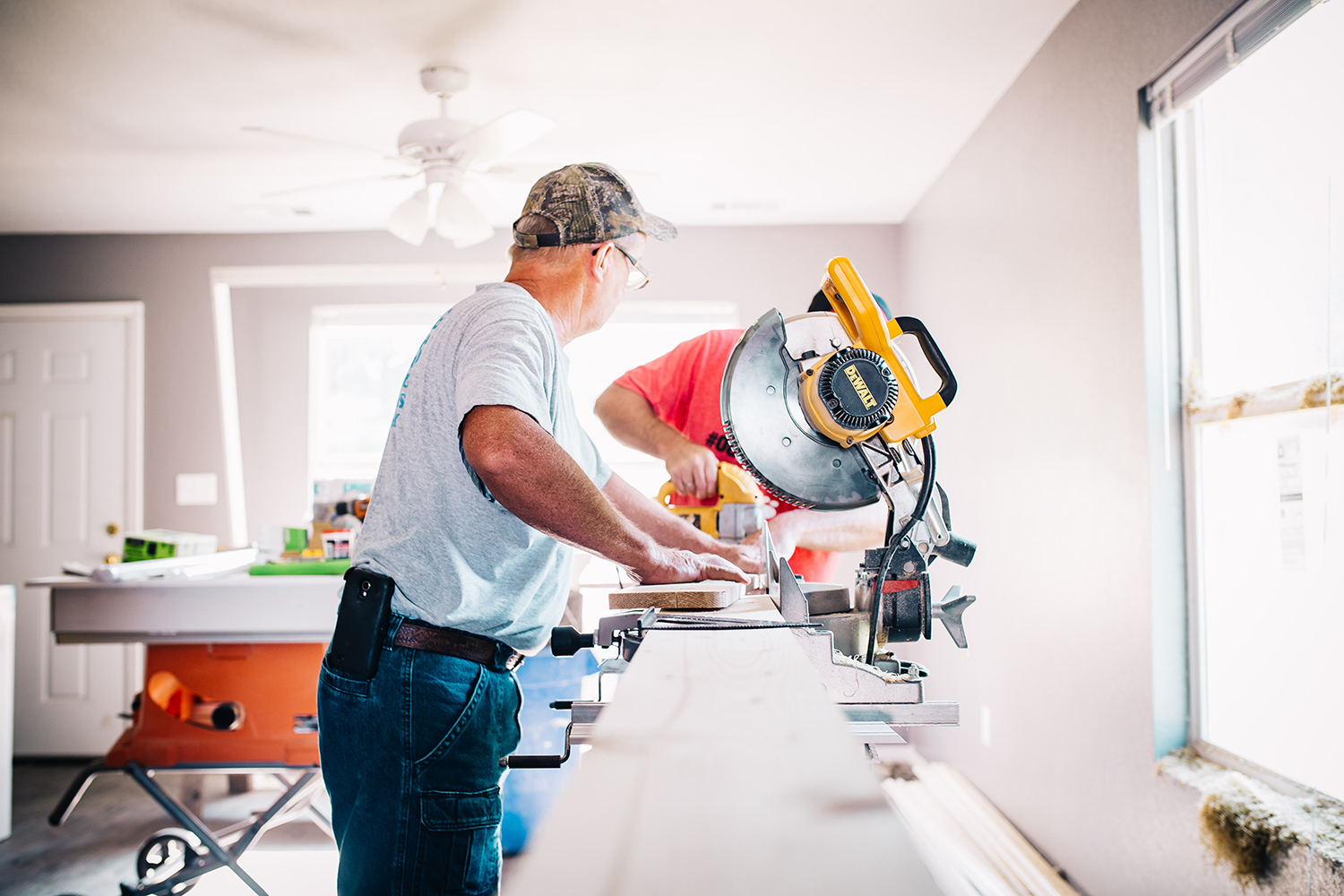Just last November, PortMiami was bustling with construction workers bringing to life five new cruise terminals and two cruise company headquarters. Future cruise business was all but guaranteed: Fiscal year 2020 was set to break the port’s 2019 record of 6.8 million passengers, up 22 percent from 2018.
The county agreed to pay $700 million toward the projects, and the cruise companies — Carnival Corporation, Royal Caribbean Cruises Ltd., Norwegian Cruise Line Holdings, MSC Cruises and Virgin Voyages — agreed to repay the county $5.8 billion over the next 20 to 62 years.
In November, port director Juan Kuryla described the deals as “iron clad.” When asked by the Herald what would happen to the promised return on investment if for some reason cruise ships were only half full or if the ships did not to come to Miami at all, Kuryla said the companies would still be on the hook for the funds.
“They’re still committed to pay,” he said.
Since then, the COVID crisis has roiled the seas.
While some terminal construction has continued amid the pandemic, much of the $7 billion passenger cruise economy associated with PortMiami is drydocked, as is the $2 billion the industry generates at Port Everglades. The industry halted cruises in mid-March, and most companies have canceled sailings through mid-September. At least one-fourth of the ocean-going fleet has experienced COVID-19 outbreaks resulting in at least 82 deaths among passengers and crew, a Miami Herald investigation has found.

As a result, the passenger fees that fund much of PortMiami’s unprecedented development — $105 million in 2019 — have dried up. Many of the 60,000-plus South Florida residents who work directly and indirectly for the cruise industry have seen their salaries cut or their jobs disappear entirely, a loss of $303 million in income per month, according to an analysis by the Florida International University Jorge M. Perez Metropolitan Center. Those who shuttle cruise passengers to the port, feed crew members, and move luggage on and off the ships are dipping into their savings to survive.
The port itself hasn’t had to dip into reserves, Kuryla said, thanks to continued business on the cargo side — estimated at about $35 billion — and cost cutting measures like ending cruise company marketing incentives and leaving county positions unfilled. Mayor Carlos Gimenez has waived berthing fees — totaling around $8 million from mid-March through mid-June — to support for the industry.
“We’re with the cruise lines in the good times,” Gimenez said in March. “And we’re going to be with them in the bad times.”
Kuryla now has to consider a once-unthinkable scenario where cruising remains banned indefinitely. If that were to happen, he said, PortMiami would exhaust half of its reserves by the end of 2021 before the county would consider a new operating model, possibly pivoting to more cargo and halting the construction projects.
The situation at Port Everglades is less dire. Impact from its passenger cruise operations is only $2 billion, resulting in $60 million in revenue for Broward county in fiscal year 2019. The county’s cruise-focused infrastructure projects are far more modest and depend far less on cruise-line contributions.

Kuryla was hoping cruising would be back at the end of July. Now Miami is facing its first cruise-less summer since the industry started in the 1960s.
“Many people were not even aware of what a pandemic was,” he said. “No one ever imagined something like this.”
So far, the county has spent about $260 million on the PortMiami cruise terminal projects, or around one-third of the total county sum owed, and the companies have paid back $60 million, or 1% of the total industry sum owed. Legal teams for the county and the companies have exchanged letters citing force majeure, or unforeseen circumstances, in order to get some relief from the payment deadlines, Kuryla said.
Investigation
How many coronavirus cases have been linked to cruises? Check out the latest numbers
The Miami Herald investigated COVID-19 outbreaks on cruise ships. Explore the findings of the most comprehensive tracking system of coronavirus cases linked to the cruise industry.
The deals backed by passenger fees — Norwegian Cruise Line, Carnival Corporation and Virgin Voyages terminals — require the companies to pay the shortfall between the passenger fees promised and the passenger fees realized by the end of September, a sum Kuryla estimates to be $30 million for 1.6 million passengers. Royal Caribbean Cruises has paid rent on its existing office and terminal through March, and is still negotiating with county over April and May, Kuryla said. Royal Caribbean Cruises and MSC Cruises do not owe the county rent for their new office and office/terminal, respectively, until the projects are finished.
The Norwegian Cruise Line terminal will be finished this month, Kuryla said, two months behind schedule. The Virgin terminal will remain on its planned timeline to finish before the arrival of the company’s second ship in November 2021. Timelines for the other pending projects are being re-negotiated, Kuryla said.
“Whatever we end up doing, however we end up modifying these deals, there will be a win-win, a win for the port and a win for the line,” he said.
The CDC has not yet begun to work on a plan to reopen cruising, as cruise ships continue to experience COVID-19 outbreaks among crew.

The economic pain caused by the shut down is a grim reminder of Miami-Dade’s ongoing dependence on tourism. While efforts to diversity the economy continue, tourism still is the third largest industry in Miami-Dade following health care and social assistance and retail trade, and provides the lowest median annual salary — $21,500. Ned Murray, associate director of Florida International University’s Jorge M. Perez Metropolitan Center, said focus on other industries could make Miami more resilient when the next crisis comes.
“Miami-Dade and quite frankly South Florida and Florida in general need to create more resilient economies that are less susceptible to these economic shocks,” he said. “It’s not just the recession in 2008, but everything hits us harder than other economies throughout the U.S. We can’t continue going through this every economic cycle and every catastrophe…We have to get serious.”
Meanwhile thousands of workers who supported the cruise industry in South Florida are waiting.
“We live off tourism”
On a recent week day, Sanaa Ghorab carefully folded the windshield shade of her 33-passenger bus, parked on a vacant lot in Brownsville since mid-March. It’s good to turn the buses on every once in a while, she said, while they aren’t being used.
At just five feet tall, Ghorab, 44, has a deep laugh and quick wit. The mother of two is the friendly face cruise passengers see when they leave their ships, usually very early in the morning, and look for a way to get to the airport or to a hotel. She wears a big smile and a port ID, advertising her $10 to MIA, $15-20 to Fort Lauderdale airport fare, a price agreed upon between passenger motor carrier competitors.
Ghorab built up her shuttle business, VIP Shuttle, over the past two decades. In March she was operating two 14-passenger vans and three 33-passenger buses. Sometimes she drove; other times her two part-time employees — one a University of Miami professor, the other a FedEx driver — were in the driver’s seat. She netted enough to support her husband and their two sons.

On March 9, the day after the U.S. Centers for Disease Control and Prevention warned Americans to avoid cruise travel, Ghorab was out at the port, helping concerned passengers get home. On March 16, she shuttled hotel guests to the port, where the cruise companies handed out letters informing them that the industry had shut down. That was her last day of work.
Her two vans have been parked at her Miami Springs house ever since. She’s paying to park the three buses at the lot in Brownsville. She hasn’t seen either of her employees in months.
When she thought cruising would return in July, she avoided applying for unemployment benefits after hearing the horror stories of Florida’s sluggish system — one of the slowest in the country. Now, she’s reconsidering applying.
“I have a good amount saved, but if the cruise ship industry changes, what’s going to happen to me?” she said. “We’ll have to sell the vehicles then. The cases don’t keep going down, they keep going up in Florida.”
Working at the port hasn’t been easy.
Over the last five years, Ghorab has seen her profit margins narrow with the competition from ride-share drivers like Uber and Lyft. Every time Ghorab enters the port, she pays $4.50 for each van and $9 for each bus. Because her prices are fixed, she can’t pass that price onto her passengers like the ride-share companies do. Ride-share and taxi drivers pay just $2.
Ghorab said the port once had a designated lot for shuttles; now she and her colleagues scramble to park wherever they can without getting a ticket.
Just before the shutdown, the cruise companies started to offer ground transportation at just below her price, around $8 to downtown Miami, further absorbing some of her business.
Come August, she will owe the county a $625 fee for her business license and $650 for each of the vans — fees she hopes will be waived. She received a $2,700 loan as part of the federal paycheck protection program, not enough to meet payments for the vehicles and the lot. A limo driver started an online petition asking the county to delay the permit renewal date until April 2021. It had more than 350 signatures this week.
“It is not survivable,” she said. “We are the worst industry in the state of Florida.”
Now she is staying home, working on home improvement projects and focusing on staying healthy. She had a booking for shuttle service from a hotel to the port for a Carnival Cruise Line cruise on July 31, but after the industry announced it was canceling cruises through mid-September, the customer canceled.
“We live off of the tourism. We are the face of the port and the airport. The port needs us there,” she said. “I wish I had another type of business to fall back on but I don’t. I invested 20 years of my life in this. It’s crazy.”
Innovating to survive
For Filipino crew members who work on cruise ships based at PortMiami, downtown restaurant Manila Kantina provides a rare taste of home.
Owner Judith Blasco immigrated from the Philippines in 2007 and lived in Orlando briefly before settling in Miami. She was the head chef at a Chinese restaurant in Brickell, and on her break, she would walk downtown and visit the various stores. She saw an opportunity for a Filipino market and lunch spot.
Feeding and caring for the crew members has become her life’s work.
“We’re not here to be rich,” she said. “We’re here to serve people who need us.”

Blasco, 56, and her son Petronio, 28, started the business in 2012. Just one crew member came on the first day, Blasco said. But slowly word spread about the authentic cooking, and now during peak season as many as 500 seafarers visit the restaurant in one day.
The shelves along the restaurant are filled with familiar food products like mix to make bibingka (coconut rice cake) and the sugary coconut dessert sapin-sapin. Essential hygiene products like shampoo and deodorant are available, too. In the back is the $10 hot buffet of grilled eggplant, fish, noodles. Bible verses line the walls.
When crew suddenly stopped showing up at the restaurant in mid-March, Blasco lost 80% of her customers, she said. This year she hoped to expand to Fort Lauderdale to serve the crew members from Port Everglades.
Now, those plans are on hold.
“We are trying to do the best we can,” Blasco said. “As long as we survive we can keep helping people.”
She received $4,000 in paycheck protection program funds, but she doesn’t know how long she can hold on to the restaurant. Everything she earns is going toward rent. She said she will continue cooking no matter what.
Every day she fields dozens of messages from depressed crew members. More than 28,000 are still suck at sea without pay as they wait to be repatriated. Some are still getting COVID-19.
“They are away from home, worried about their families,” she said. “I want to touch their hearts.”

To survive, Blasco has begun delivering-vacuum packed meals to crew members who place orders through Facebook messenger. Blasco has shipped boxes of meals to cruise ships in Florida, California, Georgia and Virginia. She doesn’t charge for the shipments, just asks crew to pay what they can.
On a recent weekday, she received photos from crew members dressed in their white jumpsuit uniforms on a Norwegian Cruise Line Holdings ship, proudly posing with a package — four garbage bags and one cardboard box full of meals — in the deck department room.
She smiled and sighed, touching her hand to her chest. The package made it.
Working the docks
Since 1955, the building on the corner of NW 2nd Avenue and NW 8th Street in Overtown has been the home of the International Longshoreman’s Association Local 1416, a union started in 1936 by Miami’s dock workers.
Alex Yanes, 26, became a longshoreman shortly after graduating high school, following the footsteps of his grandfather. He wears a necklace with an anchor pendant.
Longshoremen — despite the name, about 8% are women — are responsible for loading the cruise and cargo ships and for transferring all goods, including luggage, on and off. The work is hard on their bodies, especially for those low on the seniority list. They move heavy machinery and work days at a time with little rest.

“We have a saying, ‘No days off’,” said Yanes. “It’s literally no days off. We work two days straight and come home the third day.”
Prior to the pandemic, Yanes and hundreds of workers walked through the doors of the union hall each morning between five and six o’clock to wait for assignments. By 6 a.m., they are out the door and on their way to PortMiami.
Between shifts, workers rest in their cars in the “chase” area, a parking lot for chasing shifts. Now that Yanes has been working at the port for nearly five years and has seniority, he spends less time in the chase area and more time at home with his girlfriend.
For Yanes, it’s better work than the job he had out of high school as a restaurant server; the hours are more flexible and the pay better, he said. He uses the $22 an hour wage to help support his sisters and their kids.
As long as he works 700 hours a year, he qualifies for basic healthcare. If he works 1,000 hours, he get paid vacation and a better healthcare plan.
“You can wake up or stay asleep in the morning,” he said. “It’s definitely more fun; there’s more freedom. I can be me. In restaurants, you have to show hospitality.”
In early March, rumors started spreading around the union hall that the cruise industry — which accounts for 60% of the union’s work — would be shutting down.
“We were hoping that it wasn’t going to happen, but we knew we would be affected hard,” he said. “First they said a month maybe. Then it kept longer, more than was expected.”
In March, the number of cruise work hours for longshoremen was 38% lower compared to March of last year. In April, hours dropped 88%, and in May 92%. Stevedore companies contracted by the cruise lines contributed less than half the amount to workers’ pensions in April 2020 as they did in April 2019.

Now only around 80 longshoremen come to the union hall every day, meaning fewer are buying lunch and shopping in the Overtown area, too.
Yanes’ last day working at the port was April 18. He is living off of his savings and working part time for his father’s air conditioning company. He is grateful to be able to spend more time with family, whom he rarely sees when the port is busy. He recently went fishing trip in Marathon and caught a few snapper.
“I can’t last long,” he said. “I don’t want to spend all my money from my savings.”
But he said he isn’t considering another profession.
“It is my occupation,” he said. “I am a longshoreman.”







